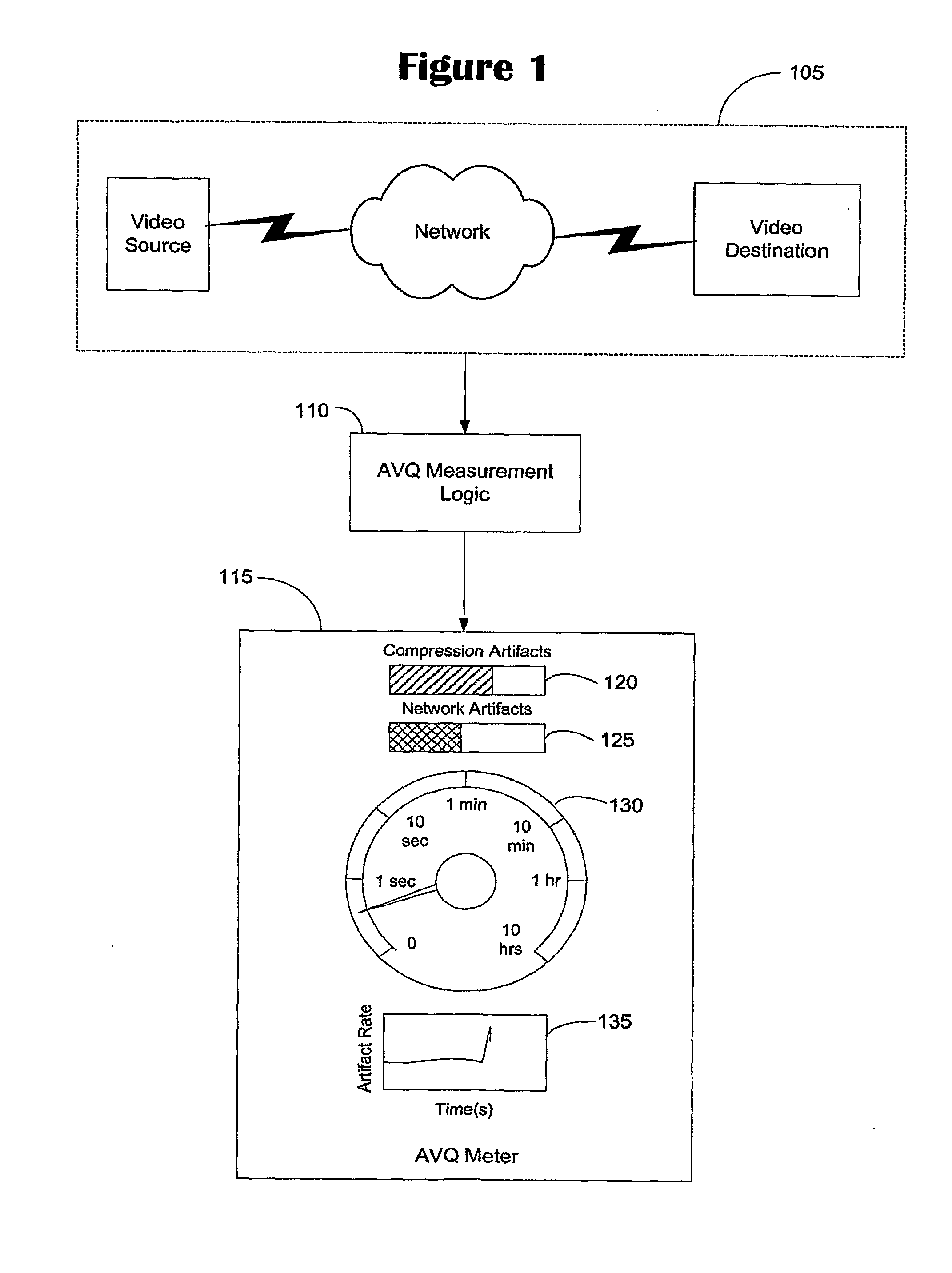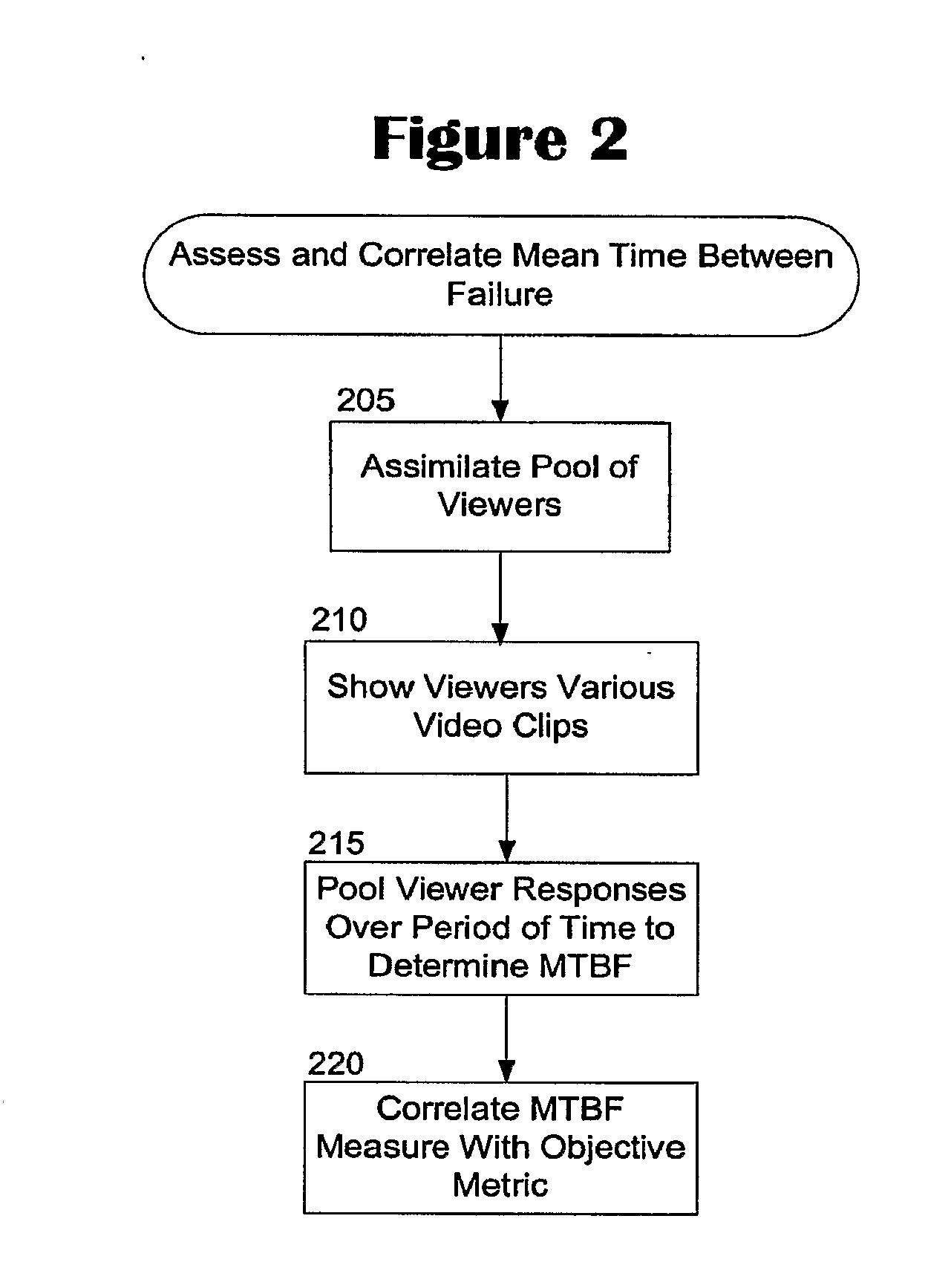Automatic Video Quality Measurement System and Method Based on Spatial-Temporal Coherence Metrics
a video quality and spatial-temporal coherence technology, applied in the field of measuring network and compression artifacts, can solve problems such as network artifacts, function unexpectedly, video quality evaluation,
- Summary
- Abstract
- Description
- Claims
- Application Information
AI Technical Summary
Benefits of technology
Problems solved by technology
Method used
Image
Examples
Embodiment Construction
[0023]The inventive automatic video quality metric system can be used to evaluate the quality of processed video in a reliable manner and without the need for significant resources in terms of processing power and overhead of bandwidth, and correlates well with subjective measurements. FIG. 1 illustrates a representative operating environment for the automatic video quality (AVQ) metric system 110 (AVQ system). Advantageously, the system 110 allows for evaluation of processed video anywhere in a network 105, and can measure video in the case where the original video reference is not available. After measuring the video, the AVQ system 110 can, in an exemplary embodiment, show the measured coding and network errors on an AVQ meter 115. The AVQ system 110 and AVQ meter 115 may be implemented and executed in software code, as can be performed by one of ordinary skill in the art in view of the methods and systems described herein.
[0024]In an exemplary embodiment, the AVQ system 110 work...
PUM
 Login to View More
Login to View More Abstract
Description
Claims
Application Information
 Login to View More
Login to View More - R&D
- Intellectual Property
- Life Sciences
- Materials
- Tech Scout
- Unparalleled Data Quality
- Higher Quality Content
- 60% Fewer Hallucinations
Browse by: Latest US Patents, China's latest patents, Technical Efficacy Thesaurus, Application Domain, Technology Topic, Popular Technical Reports.
© 2025 PatSnap. All rights reserved.Legal|Privacy policy|Modern Slavery Act Transparency Statement|Sitemap|About US| Contact US: help@patsnap.com



